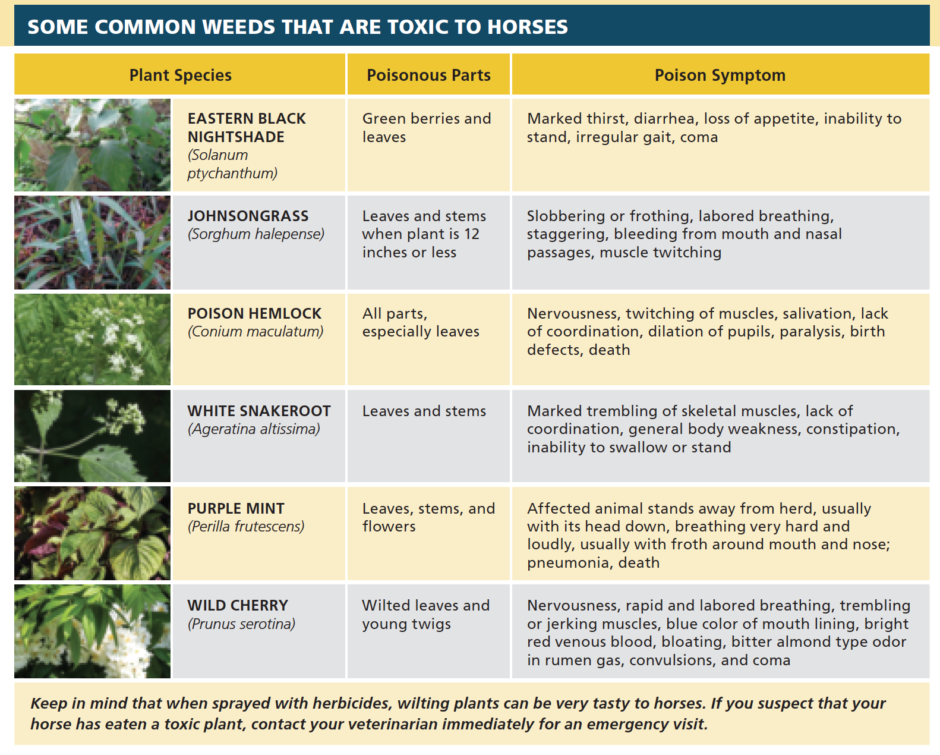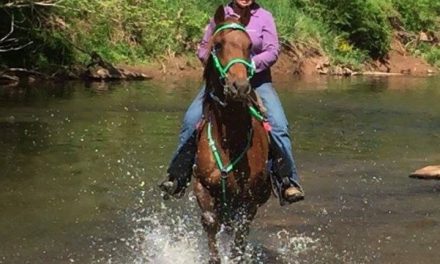Source: Maryland Department of Agriculture Office of Resource Conservation
Weeds spread quickly, so look for new weed patches on your property regularly. Act immediately to treat them by using one or more of the weed control practices listed below. Team up with neighbors to improve effectiveness. Be sure to correctly identify weeds for proper control. Remember, weed control alone is not enough. It is also necessary to modify the practices that caused weeds to become established in the first place!
LEARN TO SPOT WEEDS BEFORE THEY…
• Choke out desirable plants
• Reduce the productivity of your pasture and natural areas
• Spread RAPIDLY!
• Affect the health of your livestock
PREVENTION
Good land management and proper fertility will help keep desirable vegetation healthy and weeds under control. Buy quality clean hay, straw, and bedding. Look for weeds on your property and remove them promptly. Well managed grazing will inhibit weed establishment and encourage the healthy development of pasture grasses.
LIVESTOCK TRANSPORT
Because livestock and wildlife can easily carry and spread weed seeds on their coats or in their feces, avoid moving livestock from a weedy area to a weed-free area. Some weed species, if eaten, will make livestock sick.
MECHANICAL CONTROL
Mow weeds as needed before they go to seed. Pull small weed patches and weeds near streams by hand.
CHEMICAL CONTROL
Herbicides can harm natural resources if used incorrectly, but are effective when applied correctly in the proper amounts and at the proper stage of plant growth. If you choose to hire a professional applicator, he/she must be licensed and certified by the Maryland Department of Agriculture’s Pesticide Regulation Section. Trained personnel are issued identification cards from the Department and the business license number must be displayed on the service vehicle. Call 410-841-5710 or visit egov.maryland.gov/mda/pesticides to search a database of licensed companies and certified pesticide applicators.
If you are a do-it-yourselfer and decide to apply herbicides to control
weeds:
• Ask your local Extension office for recommendations on herbicides for your particular problem.
• Buy only the amount of herbicide that you need, for the current weed problem.
• Read and follow all label instructions.
• Wear protective clothing specified on the label.
• Keep herbicides away from waterways.
• Do not spray in the morning when bees are active.
• Handle and mix all herbicides on a concrete slab to protect groundwater resources.
• Contain and clean up all spills immediately.
• Be sure herbicides will not reach and kill desirable trees and shrubs.
• It is best to keep horses out of pastures when applying herbicides.
• Contact your county’s Extension office or hazardous waste disposal program for information on proper disposal of unwanted herbicides.
MARYLAND NOXIOUS WEEDS
The Maryland Noxious Weed Control Law requires landowners to eradicate or control weeds designated as noxious on all types of land including:
• Johnsongrass
• Musk Thistle
• Shattercane
• Plumeless Thistle
• Canadian Thistle
• Bull Thistle
BEWARE OF THESE FAMILIAR PLANTS
There are several common flowers, ornamental landscape plants, and trees that are poisonous to horses. Do not plant these species too close to the fence or where horses can eat them. For more information on plants that are toxic to horses, contact your local Extension office. If you suspect that your horse has eaten a toxic plant, contact your veterinarian
immediately.
• Azaleas and Rhododendrons
• Black Locust
• Box Elder Maple
• Buckeye
• Cherry
• Daffodils
• Foxglove
• Hydrangea (pictured)
• Milkweed
• Mountain Laurel
• Oaks
• Red Maple
• Yews













